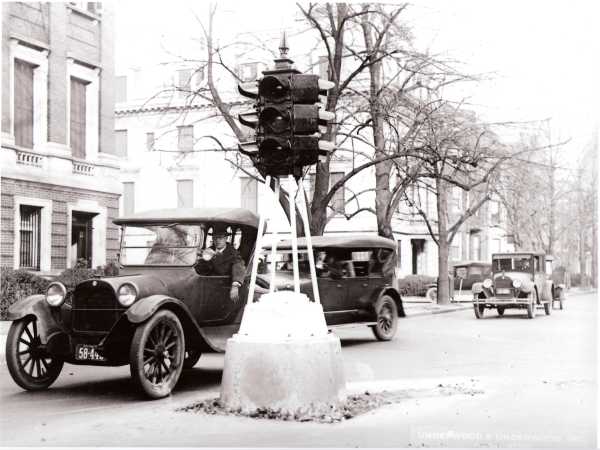Willis Lamm's
|
| History of Traffic Signal Design |
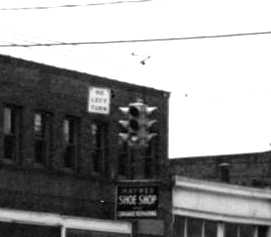
| Position, Position, Position- Standardization of Signal Placement |
Click on an image to bring up a full size view in a new window.
| Cities with narrower streets often did not have room to place traffic signals in the middle of intersections or the streets had streetcar tracks in the center. In these situations cities often mounted 4-way signals in the "throats" of cross streets or they hung single faced heads from lamp posts. |
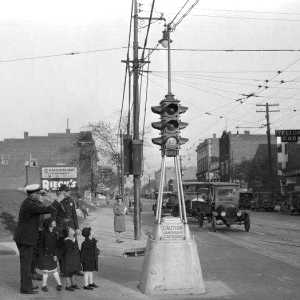
|
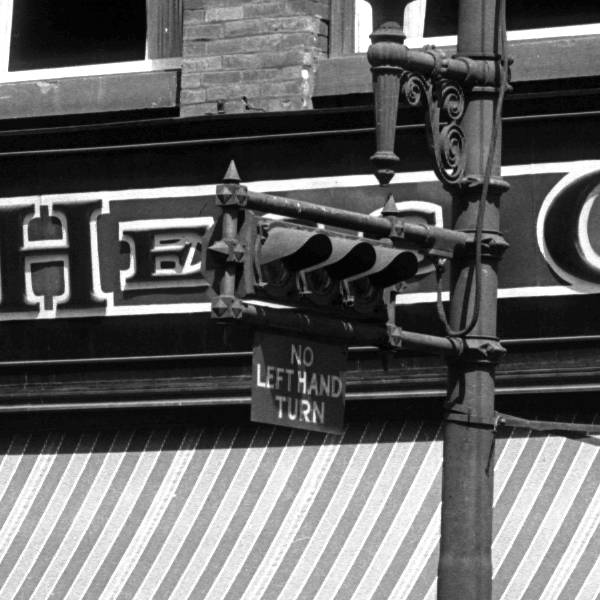
|
|
Here's an interesting photo of a transition from a signal tower to electric signals. One signal head is mounted on the tower facing the left and two post mounted signals can be seen on a lamp post on the right hand side of the photo. The signal tower has a bell mounted below the signalman's room to warn motorists of signal changes. Near the base of the tower is a controller cabinet so that the intersection can be controlled automatically when a traffic officer is not on duty.
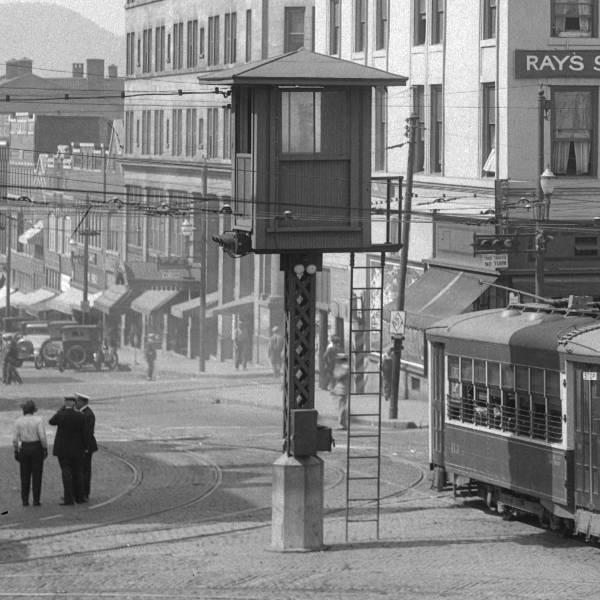
These assorted signal head placements were quite inconsistent - some being in the centers of intersections, others in side street throats, on near corner posts, or far corner posts, but they probably served well for local motorists who knew where to find the signal heads. However such an assortment of configurations could be puzzling to out of area motorists, especially when signals were momentarily hidden by trucks and streetcars or were hidden in a growing sea of neon signs. As a result a growing number of cities decided to hang signals from span wires in the centers of intersections where they could be seen and background light from electric signs was minimal.
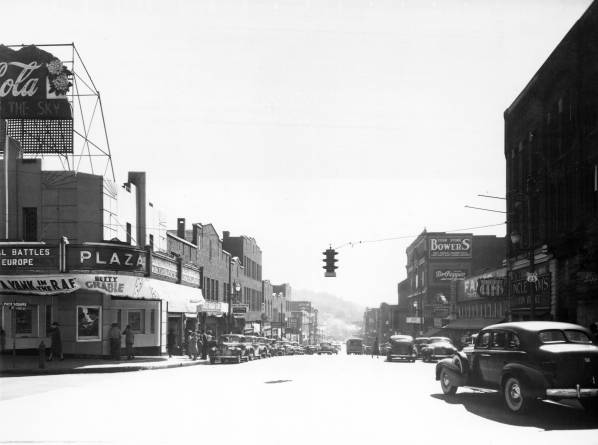
|
